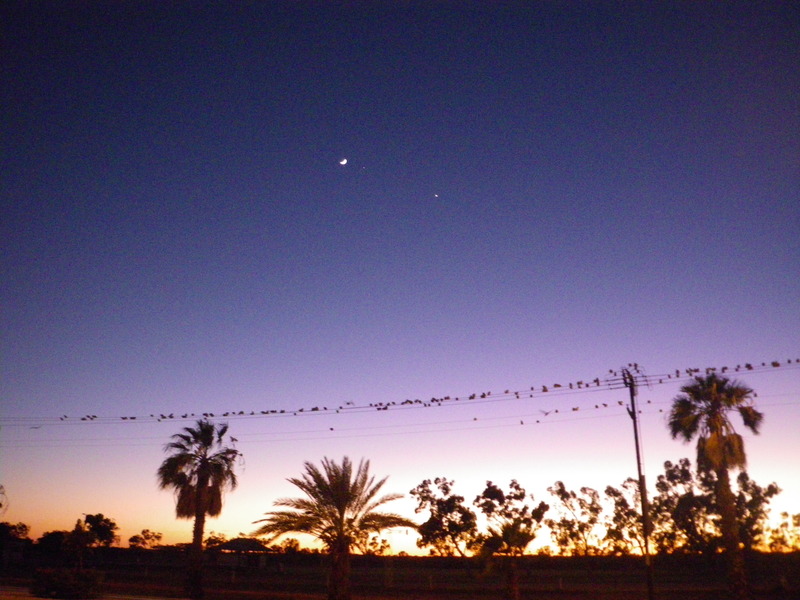
Sunrise in Exmouth was beautiful, with the moon and two planets, who I suspect are Venus and Jupiter. And lots of birds sitting on the telephone wires. I didn't see them closely, but I think they were some kind of parrot.

On this day, I was mostly driving. The coast "turns a corner" after the North-West cape, where Exmouth is located, and heads East by North-East. Along this route are the Pilbara mountains. eroded low mountains with flat tops which, from the road, look like this.
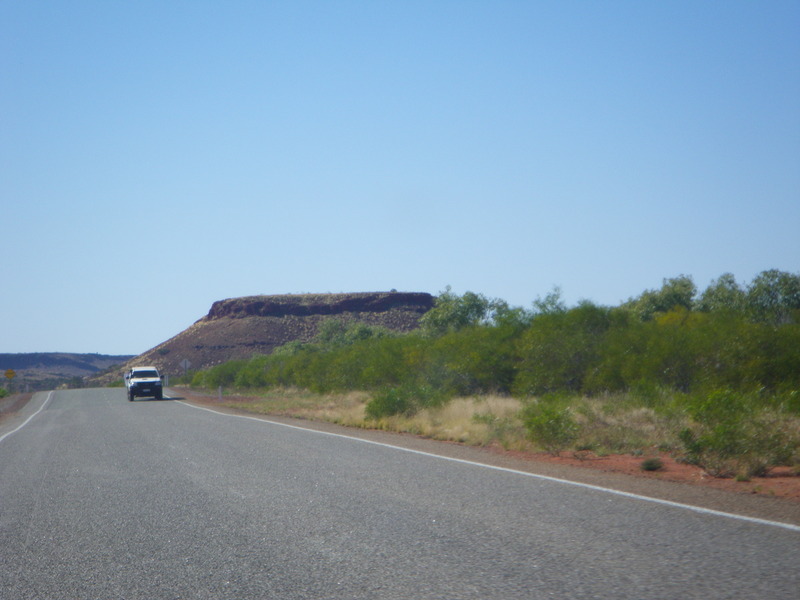
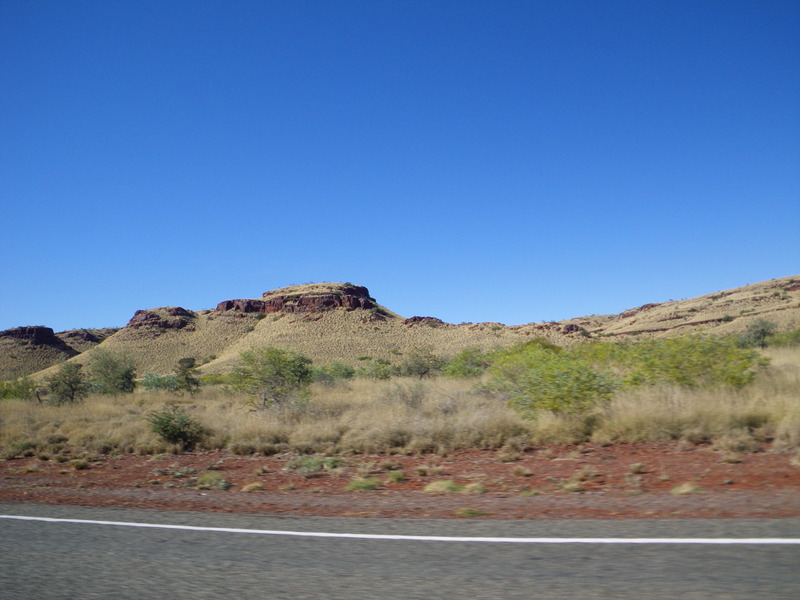
There are a couple of national parks in the Pilbara, Millstream-Chichester National park and Karijini National park. From what I have heard, they are quite beautiful. I met some people back in Seabird who were returning to Perth from Karijini, and they were very enthusiastic. However, like Kalbarri, I think it might take substantial time to do them justice. Unlike Kalbarri, I have decided to pass them by.
Because I didn't stop much anywhere, I can tell you about the roads instead.
First of all, traffic is generally light in the outback of Western Australia. Leaving Carnarvon, I counted for 10 minutes the number of cars coming in the other direction. I was going about 100km/h, and presumably so were the cars coming towards me. I counted 24 vehicles in 10 minutes, during which time I covered about 16.5km, and the vehicles coming in the opposite direction about the same. So I would say there was less than 1 vehicle per kilometer of road, which matches my other observation.
Every so often there is a motorcycle, and occasionally a bycicle, often a recumbent bycicle with large panniers.
Australian roads have bridges over the major rivers, but there are many places that must flood occasionally, but are not worth building a bridge over. To help drivers decide whether to cross the moving water, many of these floodways are carefully signposted with marked sticks that show the depth of the water.
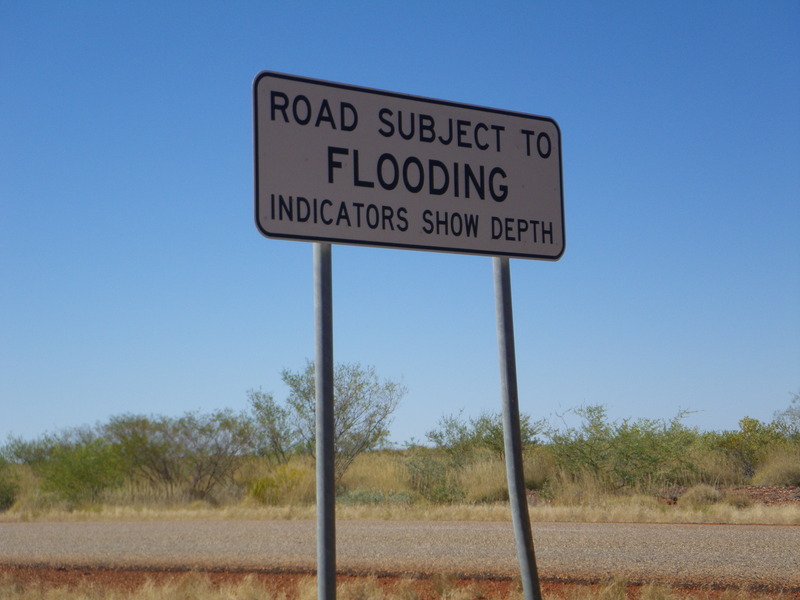
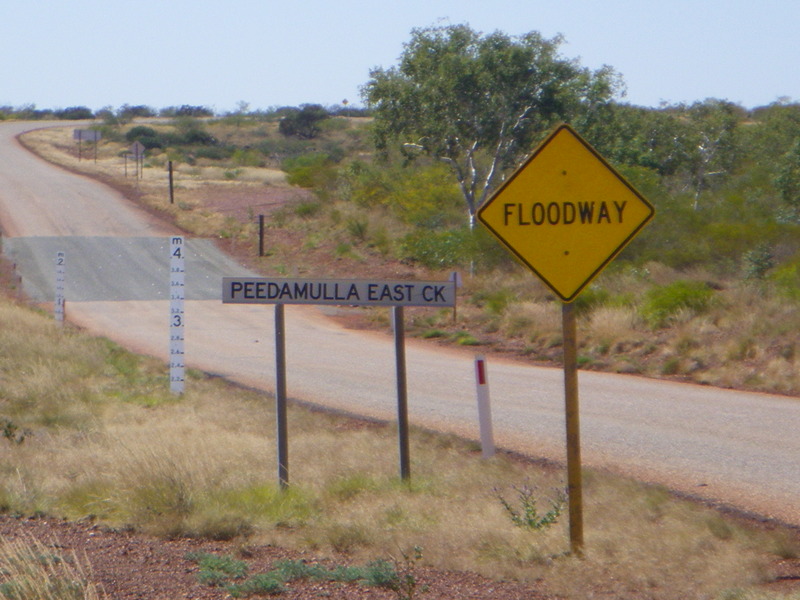
The second picture shows a 2-meter stick at the bottom of the floodway, and a 3-4 meter stick higher up. Usually, the bottom of the floodway has pavement of a different color.
Even though it is now dry, I looked for signs of past floods, such as mud washed over the sides of the road, and I did not spot any. I assume that such flooding is rare.
Presumably, when the water level is high, it would be good to have a snorkel so the air intake for the engine can be dry even when most of the vehicle is wet.
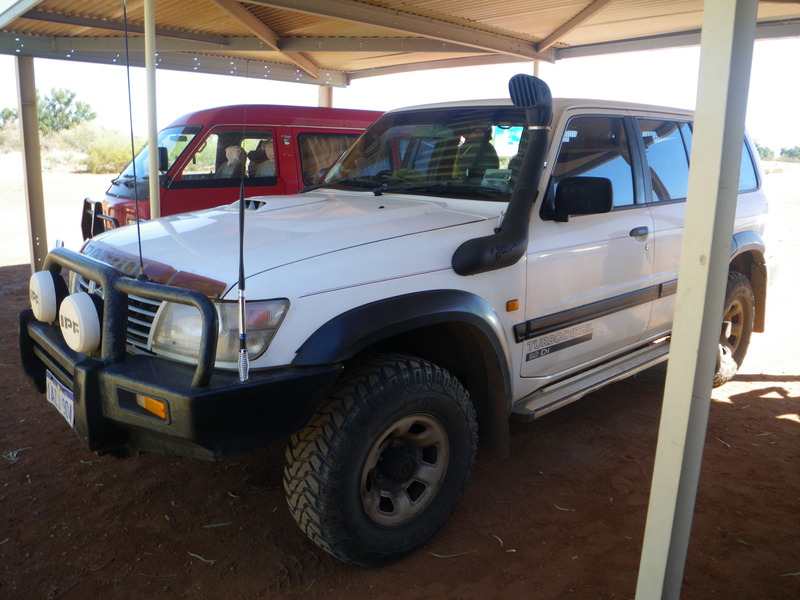
These snorkels are quite common on trucks of this kind. I asked the owner of this vehicle if he had ever taken it into the water, and he said no. Apparently the snorkel helps when driving on usealed roads, as it keeps much of the dust from going into the engine.
At major junctions along Australian roads in the outback there is often a roadhouse, providing fuel, toilets, and a restaurant. This is Nanutarra roadhouse.
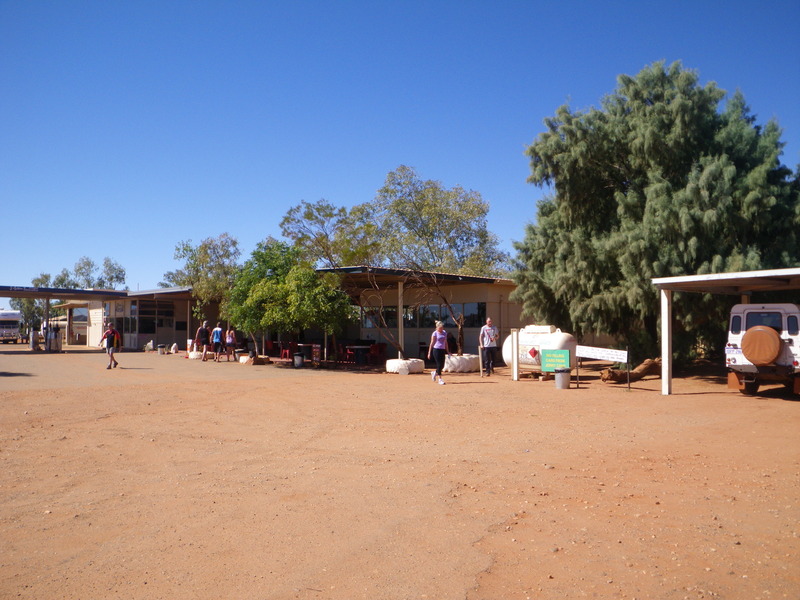
Finally, one feature of Australian roads in the outback is "Road Trains", which in the U.S. would be called tractor trailers, though sometimes there are two trailers in addition to the main load. If you look carefully at the bottom of this truck, it actually says "Road Train".
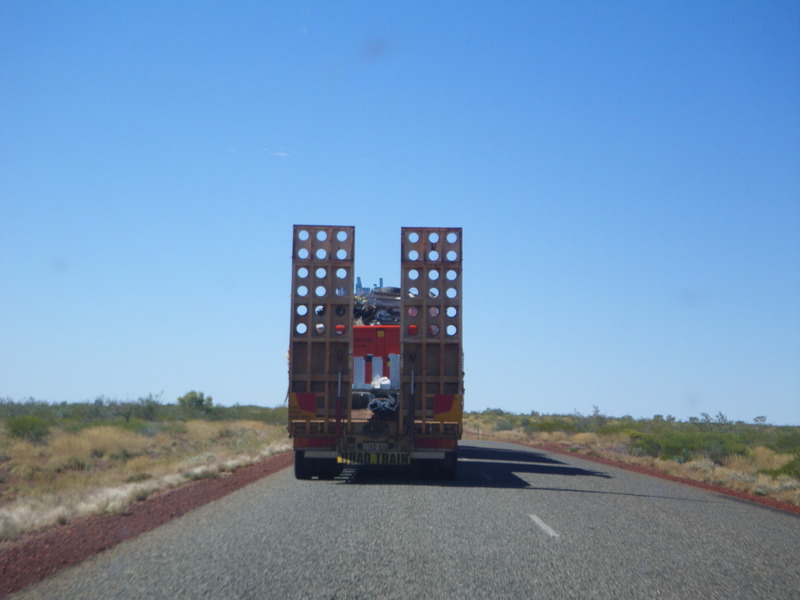
Sometimes there is an oversize road train, and then there is usually a truck about a km in front of it with a big sign that says oversize. Oversize loads seem fairly frequent. Two times they were boats, but one time it was a huge structure which I can only guess is of some use in mining. Mining, apparently, is the reason Western Australia has not been feeling the recession the way the rest of the world has. On the radio I heard ads for companies promising to recruit workers. So mining is big business here. The road went by a couple of mines and gas plants. I didn't take any pictures of the mines, all I could see was a whole lot of dirt.
Instead, having reached Point Sansom, I found some very nice views.

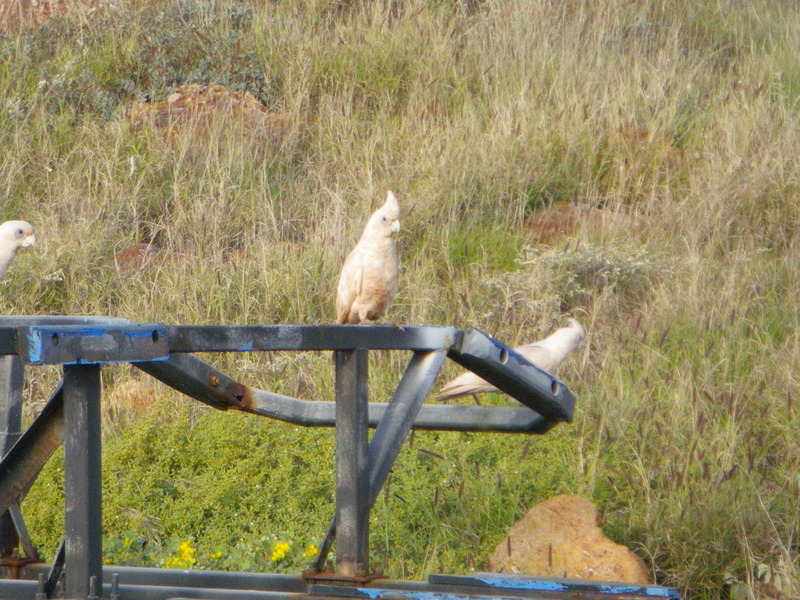
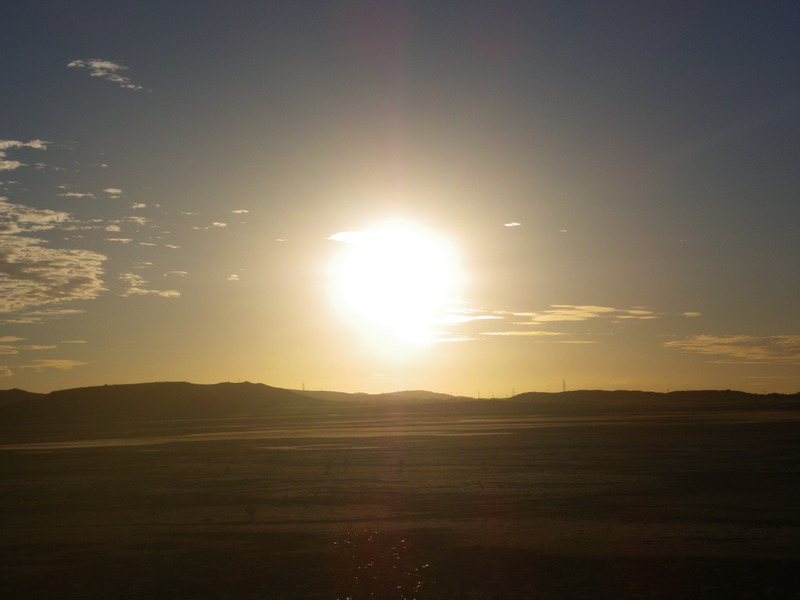
Now seems to be the time of the school holidays, which is why I've been having such a hard time finding motel rooms. I didn't find any in Point Sansom or in nearby Cossack, but I found one in a campground in nearby Roebourne.

According to the signs I've seen, people from five aboriginal nations (Ngarluma, Martuthumra, Yindjibarndi, Kurrama, and Banyjima) were forcibly resettled in Roebourne. They were very poor and the different nations had a hard time getting along. Now, Roebourne is a center of aboriginal art, proudly exported throughout the world.